PAKUPAKUAN Artist
Artist name |
楠田 直子 KUSUDA Naoko |  |
Work |
漆芸家 / Lacquer Art | |
Whereabouts |
東京 / Tokyo | |
H P |
http://www.kanshitsu.com/ | |
S N S |
Facebook/nkusuda, #naokokusuda | |
Biography |
1975 東京都生まれ。 イタリア・ローマにて幼少時代を過ごす。 1999 武蔵野美術大学 造形学部 空間演出デザイン学科卒業 イタリア・ミラノに留学(Scuola Politecnica di Design 卒業) 2001 漆芸を東京芸術大学名誉教授・願船漆工房主宰 大西長利氏に師事 2004 漆芸家として独立 |
|
Solo exhibition |
2007 ギャラリー旬(東京・広尾) 2008 MA by So Shi Te(東京・南青山) 2009 ギャラリー旬(東京・広尾) 2013 ギャラリーたちばな(奈良) 2017 ギャラリーたちばな(奈良) |
|
Group exhibition |
2019 「2019漆で寿ぐ 3人展」(art space Morgenrot / 東京・南青山) 工芸展(JILL D’ART GALLERY / 愛知・名古屋) 2020 「香りのある暮らし展」(森の小屋 / 静岡・伊豆高原) ジャパンジュエリー展(ギャラリーおかりや / 東京・銀座) 2021 「色は匂へど」BLACK ECHO feat.白石雪妃&楠田直子(白白庵 / 東京) |
|
Award |
2006 「第14回テーブルウェア大賞~優しい食空間コンテスト」 テーブルウェア・オリジナルデザイン部門 (プロフェッショナル) 審査員賞受賞(東京・東京ドーム) 2008 「わん・One 大賞 2008」優秀賞受賞(石川・金沢) 「国際漆展・石川 2009」入選(石川・金沢) 2011 「第19回テーブルウェア大賞~優しい食空間コンテスト」 テーブルウェア・オリジナルデザイン部門 (プロフェッショナル) 佳作受賞(東京・東京ドーム) 2014 「国際漆展・石川 2014」審査員特別賞、権相五賞 受賞(石川・金沢) 「伊丹国際クラフト展」入選(兵庫・伊丹) 2017 「国際漆展・石川 2017」入選(石川・金沢) |
|
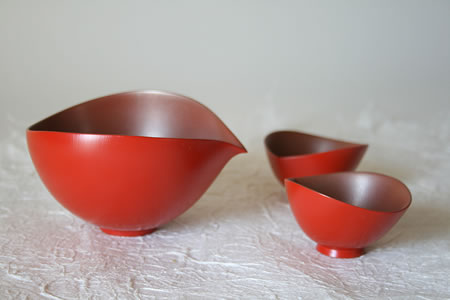 |
| 「ひとひら」 Hitohira |
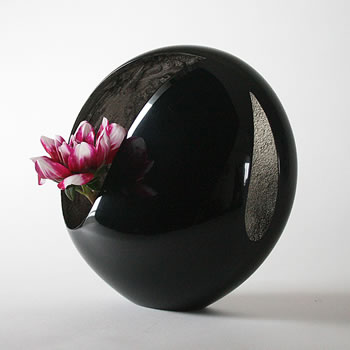 |
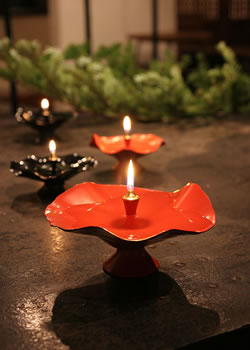 |
| 「月の満ち欠け」 Tsuki no michikake | 「ゆらぎ」 Yuragi |
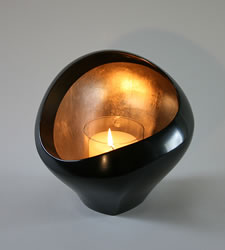 |
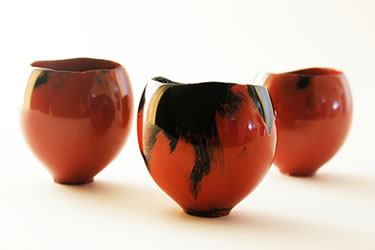 |
| 「月明り」 Tsukiakari | 「生命のちから」Seimei no chikara |
| 【ステートメント】 |
|
「漆への想い」 古来から現代に至るまで先人が育んできた漆の文化にロマンを抱き続けながら制作しています。私が漆を初めて目にしたのは、黒い漆の樹液でした。それは、まるで生きものの様な蠢く物質でした。漆の木の命である樹液を扱って制作する工程の中で、作品が自分の手から離れ本来もつ漆の力が現れてくる瞬間があります。その時、漆の命をお借りして制作させて頂いている事に気付かされます。私にとって漆はそう感じさせてもらえる大自然の恵みです。 漆が秘める普遍的な美しさを大切に、漆の技法のひとつである「乾漆」を用いて「日常使いの芸術品」を目指して制作しています。 「漆との出会い」 武蔵野美術大学で空間演出を学ぶ。卒業後、イタリアに留学。 日本の魅力はなんだろかと改めて考える機会が多い中、漆があったという事にふと気付きました。帰国し、大西長利氏主宰 願船漆工房の門を叩き、初めて漆液を見た時、その美しさ、神秘さに感激しました。そして今、自然の素材を相手に、制作出来る喜びを感じています。 「乾漆(かんしつ)とは」 原型の上に、麦漆や糊漆といった漆で出来た天然の接着剤で麻布を何層にも貼り重ねて固め、厚みの整ったところで型を離形する技法です。日本には中国との交易が盛んになった7世紀初め頃(奈良時代)に伝えられ、軽量かつ耐久性に優れていることから仏像の制作に用いられました。代表的な乾漆の仏像には、興福寺の阿修羅像、唐招提寺の鑑真和上座像等が乾漆像で親しまれております。 “japan”は、漆という意味をもっています。 |
| 【statement】 |
|
My wish When I work with my creation, I continue embracing the lacquer culture nurtured by our predecessors from ancient times to present day.My first encounter with Urushi was when I saw the black Urushi sap, the sap that looks as if it quietly whispers as it was alive. When I create my art work using this sap, the life of Urushi tree, there is a moment when it abandons my hands and gets filled with its original energy. This makes me realize that the art work I am creating is through Blessing of Nature, the life of Urushi. Never forgetting the beauty within Urushi, I aspire to create a “work of art for everyday use” through “Kanshitsu” technique. My encounter with Urushi After graduating from Musashino Art University, I went to Italy to study design. While I had many opportunities to think about Japan's beauty, I realiezed that Japan had Urushi. On returning to Japan after a year, I knocked on Master Nagatoshi Onishi's door and was trained under him for 3 years. The very first time I saw Urushi Sap, I was moved by its beauty and mystery. Now I feel the happiness of working with this natural material. What is Kanshitsu (dried lacquer) technique? The technique of Kanshitsu is created by adding layers of Linen material coating with natural adhesive such as wheat Urushi and glue Urushi on the mould. When the ideal thickness has been created, the Urushi coated linen layers is released from the mould. It is reported that Kanshitsu technique was introduced to Japan in the early 7th century (Nara period) when trade with China became prosperous. The technique was used for the production of Buddha statues because of its light weight and durability. Typical Kanshitsu Buddha statues include the Ashura statue at Kofukuji Temple and the Ganjinwajozajo statue at Toshodaiji Temple. "Japan" has also the meaning of “URUSHI". |






















